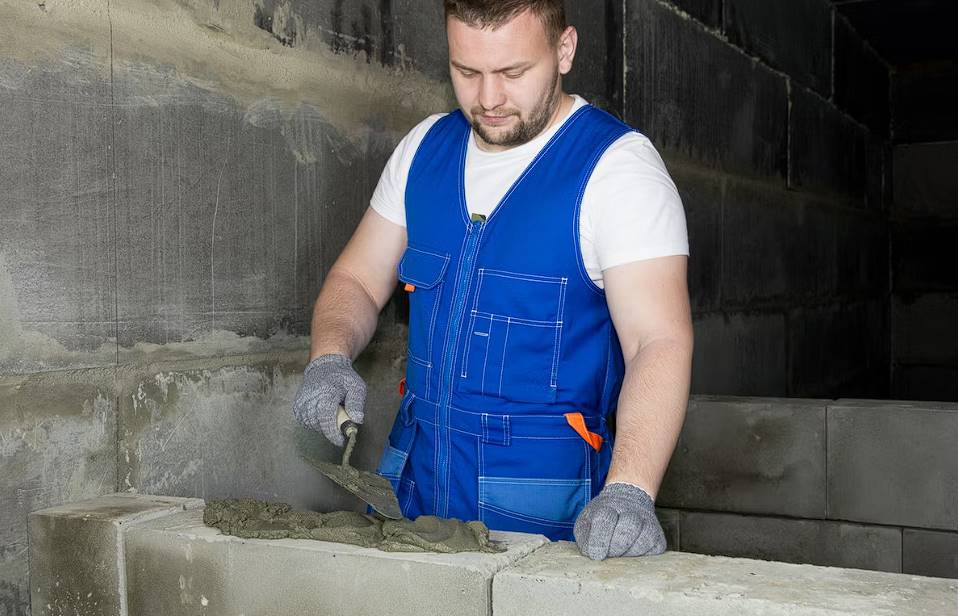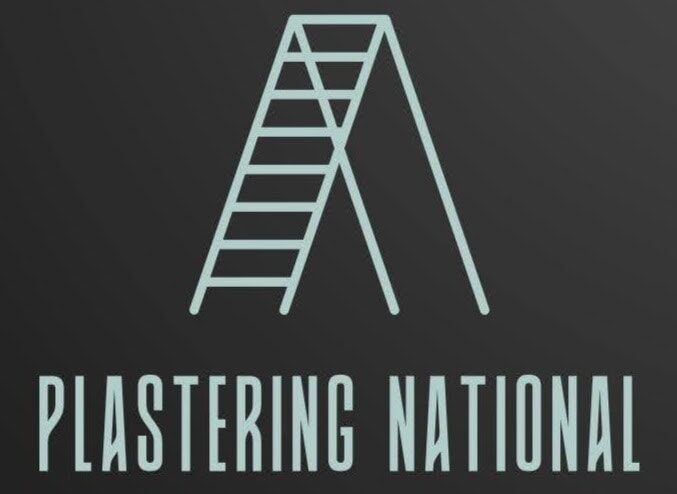The terms “cement” and “plaster” are often used interchangeably in construction, leading to confusion. Although they share some similarities, they have distinct properties and applications.
Understanding these differences is important for anyone involved in construction projects.
Let’s get straight to the point.
Cement and plaster are different materials with distinct construction uses.
Cement is a binding agent essential for creating concrete. It offers high compressive strength for structural applications such as buildings, roads, and bridges.
It’s made from limestone, clay, silica, and gypsum. Plaster, typically made from gypsum, lime, or cement mixed with sand and water, creates smooth wall and ceiling finishes.
While plaster is ideal for interiors and decorative elements, it is weaker than cement. Choosing the right material depends on the project’s requirements—use cement for structural needs and plaster for aesthetic surfaces.
What Is Cement?
Cement is a key building material used as a binding agent in construction. It is vital to create concrete, which is essential for building durable structures.
Cement is made from limestone, clay, silica, and gypsum and undergoes clinkerisation. In this process, these materials are heated in a kiln, creating a granular substance. This substance is then ground into a fine powder known as cement.
Concrete is formed when cement is mixed with water, sand, and aggregates. The chemical process of hydration binds these materials, creating a solid and durable composite.
Cement’s strength and versatility make it an indispensable material in modern construction.
Common Uses Of Cement

Cement is a fundamental material in the construction industry. It is known for its versatility, strength, and durability and plays a vital role in various structural and infrastructural projects.
Here are some of the most common applications of cement:
1. Concrete Construction
- Cement is the primary binder in concrete, a mixture of cement, sand, and aggregates.
- Used to create durable structures like foundations, beams, pillars, and floors.
- Its strength makes it ideal for residential and commercial buildings, offering long-lasting support and stability.
2. Roads And Highways
- Cement-based concrete is commonly used in the construction of roads and highways.
- Known for its durability and resistance to heavy traffic loads and weather conditions.
- Provides a smoother and longer-lasting surface compared to asphalt, reducing the need for frequent maintenance.
3. Bridges And Overpasses
- Cement is essential in constructing bridges and overpasses because it can bear heavy loads and provide structural integrity.
- Reinforced concrete, which uses cement, ensures that these structures can handle the stress of vehicles, weather, and time.
- Its flexibility allows for innovative designs in modern bridge construction.
4. Dams And Reservoirs
- Cement’s water-resistant properties make it perfect for hydraulic structures like dams and reservoirs.
- Provides the necessary strength to withstand the immense pressure of stored water.
- Ensures the longevity and stability of critical water management and energy generation infrastructure.
5. Residential Construction
- Cement is widely used in creating walls, driveways, patios, and pathways in residential properties.
- Its durability and weather resistance make it a popular choice for interior and exterior uses.
6. Industrial Structures
- Cement is key in constructing factories, warehouses, and other large-scale industrial structures.
- Offers the strength needed to support heavy machinery and equipment while ensuring the building’s structural integrity.
7. Marine Construction
- Cement is also crucial in building coastal and marine structures like piers, docks, and seawalls.
- Its resilience against water and erosion makes it a reliable choice for marine environments.
What Is Plaster?
Plaster is a smooth, uniform finish coating used mainly on walls and ceilings. It is made from gypsum, lime, cement, sand, and water.
Unlike cement, which is mostly used for its structural properties, plaster focuses on aesthetics and surface finish.
Before applying plaster, the surface must be clean and free of dust and loose particles. This ensures better adhesion.
Plastering is carried out in layers, each smoothed to achieve a flawless finish.
Common Uses Of Plaster
Plaster is a versatile material widely used in construction and design, offering aesthetic and functional benefits. Here are some of its common applications:
1. Interior Wall Finishes
- Provides a smooth, seamless surface for painting or applying wallpaper.
- It can be customised with different textures and finishes to suit various design styles.
2. Ceilings
- Creates an even, polished finish that enhances the aesthetic appeal of ceilings.
- Allows for artistic touches like ornamental designs or recessed lighting installations.
3. Decorative Mouldings
- Used to craft intricate designs, such as crown moulding, cornices, and ceiling roses.
- Adds architectural detail and elegance to both modern and classic interiors.
4. Restoration Work
- Lime plaster is commonly used in restoring historic buildings for its breathability and compatibility with traditional materials.
- Helps preserve the structural integrity of old walls while maintaining authenticity.
6. Soundproofing
- Plaster helps reduce noise transmission between rooms, making it ideal for residential and commercial properties.
Differences Between Cement And Plaster

Composition
- Cement consists primarily of limestone, clay, silica, and gypsum. It sets through a chemical reaction called hydration.
- Plaster: Typically, plaster is made from gypsum, lime, or cement combined with sand and water. Each type of plaster has different properties depending on its composition.
Strength And Durability
- Cement has a high compressive strength, making it suitable for load-bearing structures. It forms the backbone of concrete, ensuring the stability of buildings, bridges, and roads.
- Plaster offers a lower compressive strength but provides a smooth, decorative finish. It is more suited for indoor applications than structural roles.
Application Process
- Cement Work involves precisely mixing cement, sand, and aggregates with water. Proper curing is the key to ensuring thematerial’s strength and longevityl.
- Plastering requires a clean, smooth surface. The plaster is applied in layers and smoothed for a flawless finish. Proper drying and curing are essential to avoid cracking.
Working With Cement: Best Practices
Steps To Handle And Mix Cement
- Gather Materials: Ensure you have all the components—water, sand, gravel, and cement.
- Measure Proportions: Accurate measurements are crucial for achieving the desired consistency.
- Dry Mixing: Mix sand, gravel, and cement thoroughly before adding water.
- Add Water Gradually: Avoid adding too much water at once to prevent weakening the mix.
- Check Consistency: Ensure the mix is workable but not too watery.
Curing Cement
- Cover the Surface: Use a wet cloth or curing agent to moisten the cement.
- Maintain Moisture: Keep the concrete damp for at least seven days to aid in curing.
- Allow Setting: Avoid subjecting the concrete to heavy loads while it sets.
Safety Precautions
- Protective Gear: Use safety glasses, gloves, and masks.
- Ventilation: Ensure good airflow when working with cement indoors.
- Storage: Store cement in a dry place to prevent moisture damage.
Working With Plaster: Tips And Techniques
Mixing And Applying Plaster
- Prepare the Surface: Clean the area thoroughly and repair any cracks or holes.
- Mix Plaster Properly: Follow manufacturer instructions to achieve a smooth consistency.
- Apply in Layers: Use a plastering trowel to apply the plaster in thin layers.
- Smooth the Surface: Once the plaster begins to set, use a fresh trowel for a polished finish.
Drying And Finishing Plaster
- Allow Adequate Drying Time: The plaster dries naturally before sanding or painting.
- Sanding: Lightly sand the surface to remove imperfections.
- Priming: Apply a primer before painting to ensure a smooth, lasting finish.
Common Mistakes To Avoid
- Overworking: Avoid excessive smoothing as it can weaken the plaster.
- Inconsistent Mixing: Ensure a consistent texture by mixing thoroughly.
- Rushing the Process: Allow each layer to dry completely to prevent cracks.
Durability: Cement Vs. Plaster
Factors Affecting Durability
- Moisture Exposure: Both cement and plaster can deteriorate if exposed to moisture. Prosealing is necessary.
- Environmental Conditions: Extreme temperatures can affect their performance.
- Material Quality: High-quality raw materials contribute to longer-lasting constructions.
- Cement: Best for structural use due to its compressive strength.
- Plaster: Ideal for interior aesthetics but less durable under stress.
Choosing The Right Material For Your Project
The choice between cement and plaster depends on the project requirements:
- Use cement for load-bearing structures, roads, and large-scale construction.
- Use plaster for finishing walls, ceilings, and decorative elements.
Knowing when to use each material can help achieve the desired outcome and ensure the longevity of the construction.
Conclusion
Cement and plaster play different roles in construction, each bringing unique benefits. Cement is the backbone of concrete and is vital for structural integrity.
Plaster, while less strong, provides a smooth, decorative finish to interior surfaces.
Understanding these materials’ properties, applications, and handling can lead to better construction practices and more durable results.
Selecting the right material based on its strengths and limitations is essential for successful construction projects.
Cement is best suited for structural work, while plaster creates aesthetically pleasing interiors.
Professionals and DIY enthusiasts can create long-lasting, high-quality finishes in their construction projects by choosing the right material.
Frequently Asked Questions
Can cement be used as plaster?
Cement can be used as plaster, but it is not recommended for interior surfaces due to its lack of flexibility, which may lead to cracks over time.
What is the setting time for plaster?
The setting time for plaster varies depending on the plaster used, but it generally ranges from 20 to 45 minutes.
Are there eco-friendly alternatives to cement?
Yes, there are eco-friendly alternatives to cement, such as geopolymer cement, which has a lower carbon footprint than traditional cement.
Can plaster be applied to external surfaces?
Yes, plaster can be applied to external surfaces, but it requires additional additives to withstand harsh weather conditions.
Is plaster fire-resistant?
Plaster is not inherently fire-resistant; adding fire-resistant additives can enhance its fire-retardant properties.

